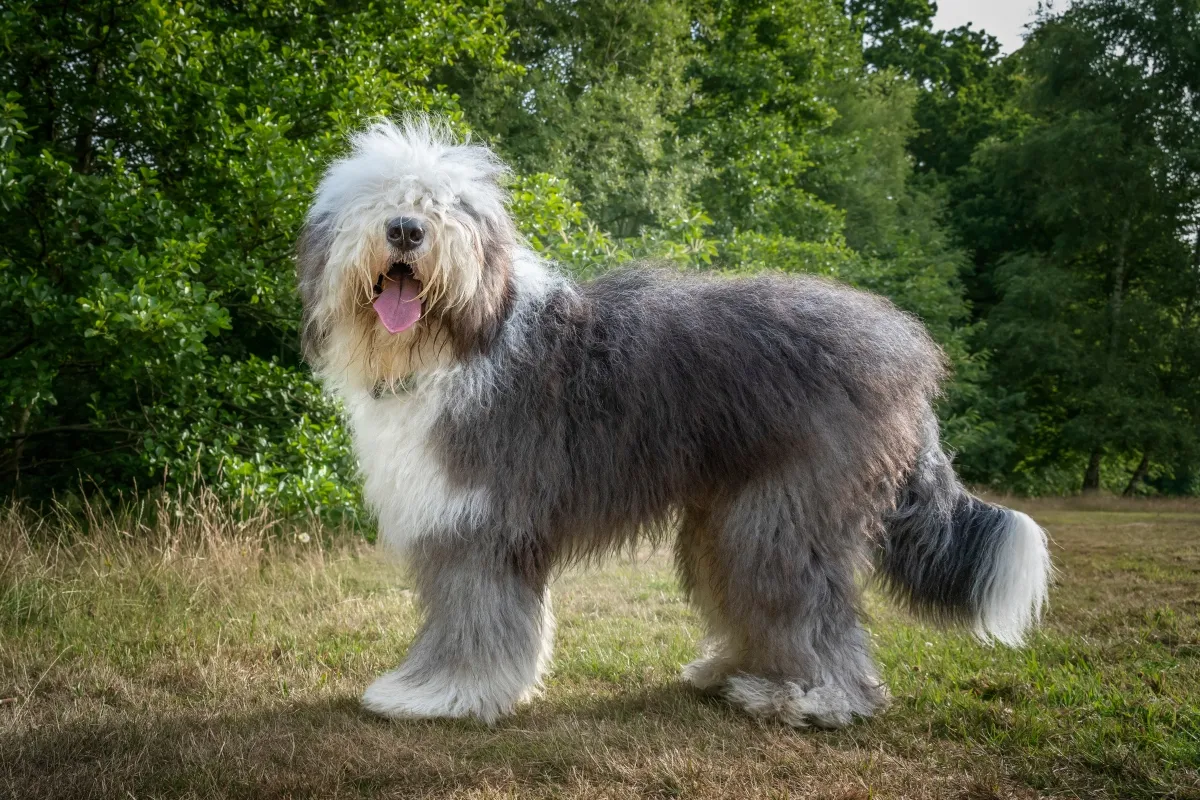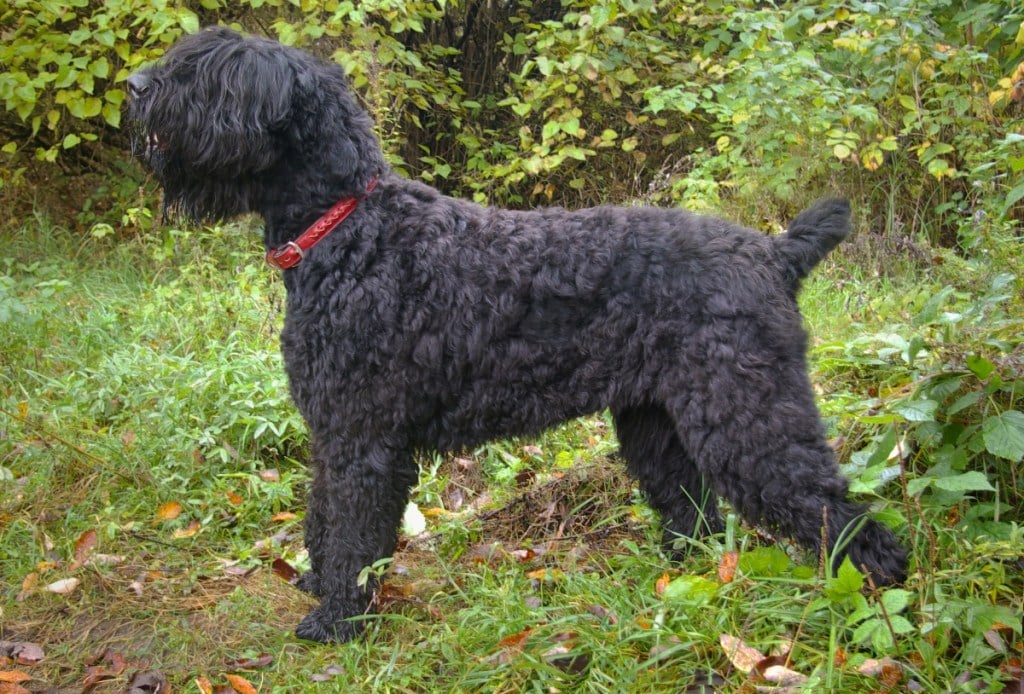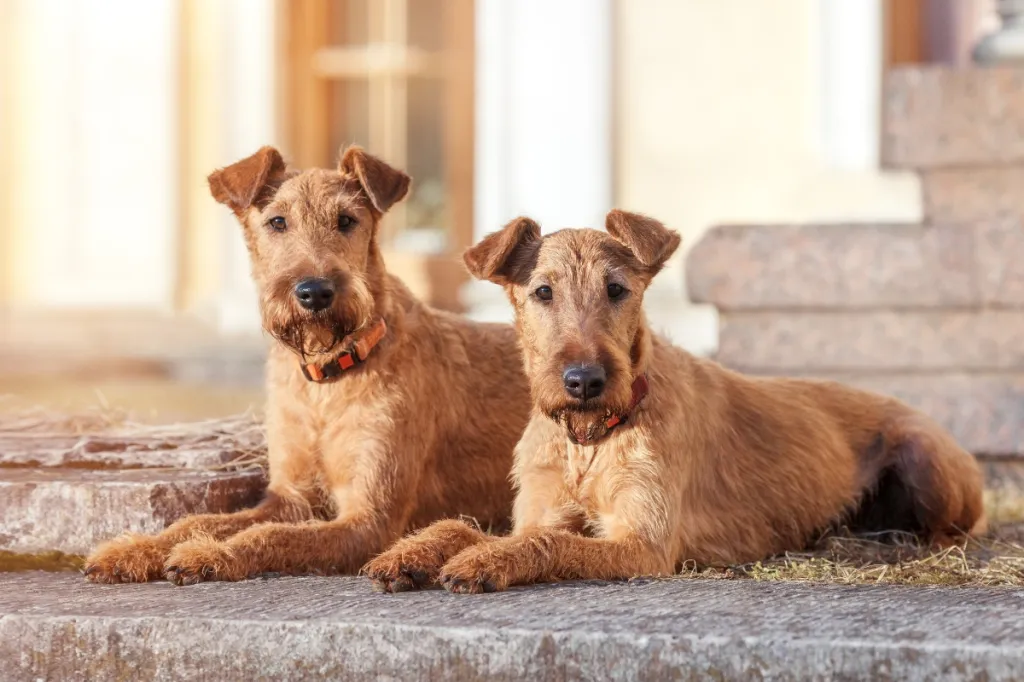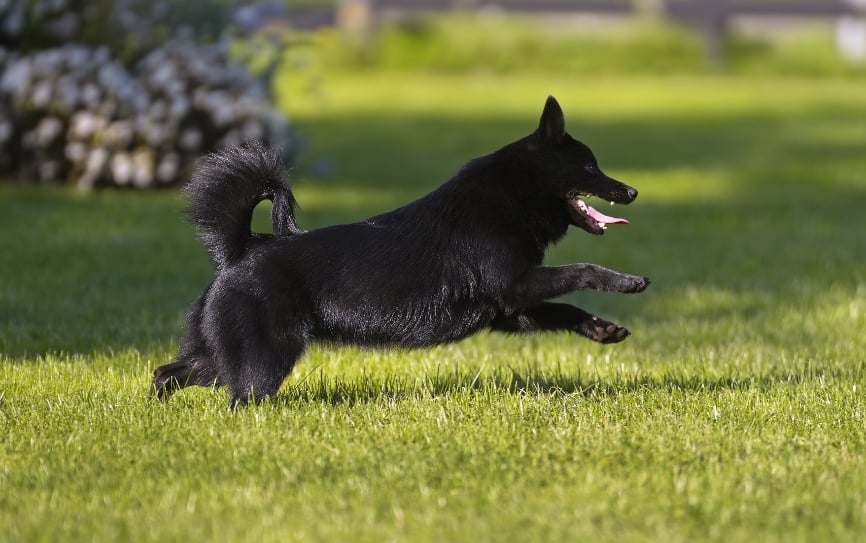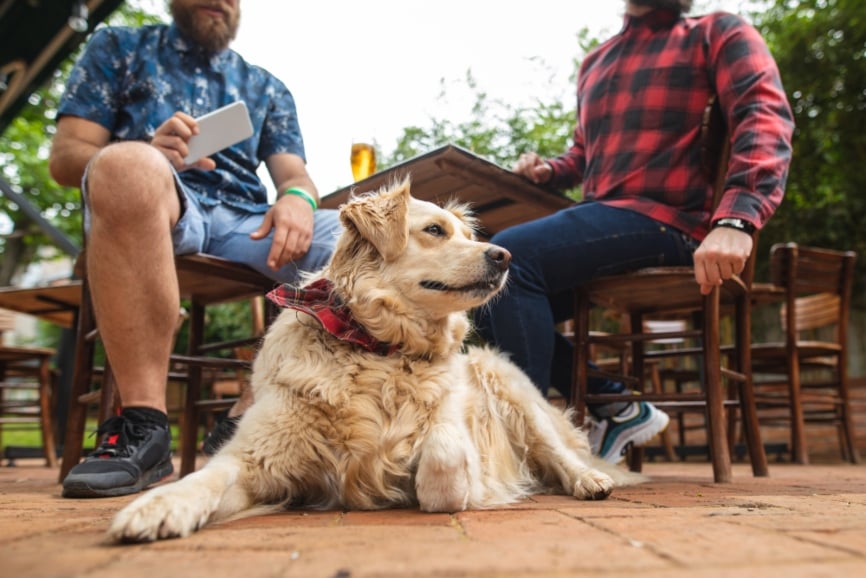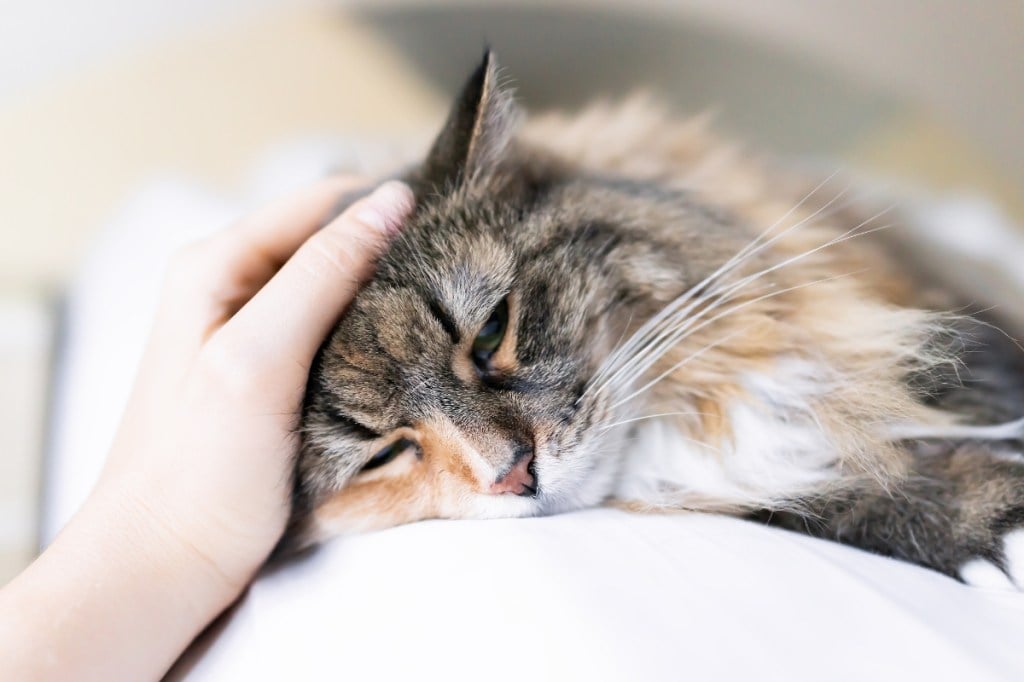Introduction to Old English Sheepdogs
Part of the Herding Group, the Old English sheepdog is an intelligent and gentle breed able to adapt to various ways of life. This is a shaggy dog with a profuse coat, bear-like walk, and mellow demeanor. Old English sheepdogs are muscular and love exploring, making them an ideal fit for active people. The dog will need exercise to be happy and healthy but will reward you by being a wonderful household companion and an excellent watchdog.
Here is more information about the Old English sheepdog to help you determine if this is the right dog for you and how you can take the best care of its health.
Size of Old English Sheepdogs
Old English sheepdogs are large dogs that can weigh between 60 and 100 pounds, depending on their gender. Female adult dogs stand at least 21 inches tall, while males are typically an inch or taller or more. They usually reach their adult weights and heights by 12 months of age.
Here’s how big you can expect your Old English sheepdog to get as the dog grows from puppyhood to adulthood. Female weights are at the low end of these ranges, while male weights are at the high end.
| Weight Chart | 3 months | 6 months | 9 months | 12 months |
| Average female and male Old English sheepdogs | 28 – 42 lbs. | 49 – 74 lbs. | 55 – 86 lbs. | 59 – 97 lbs. |
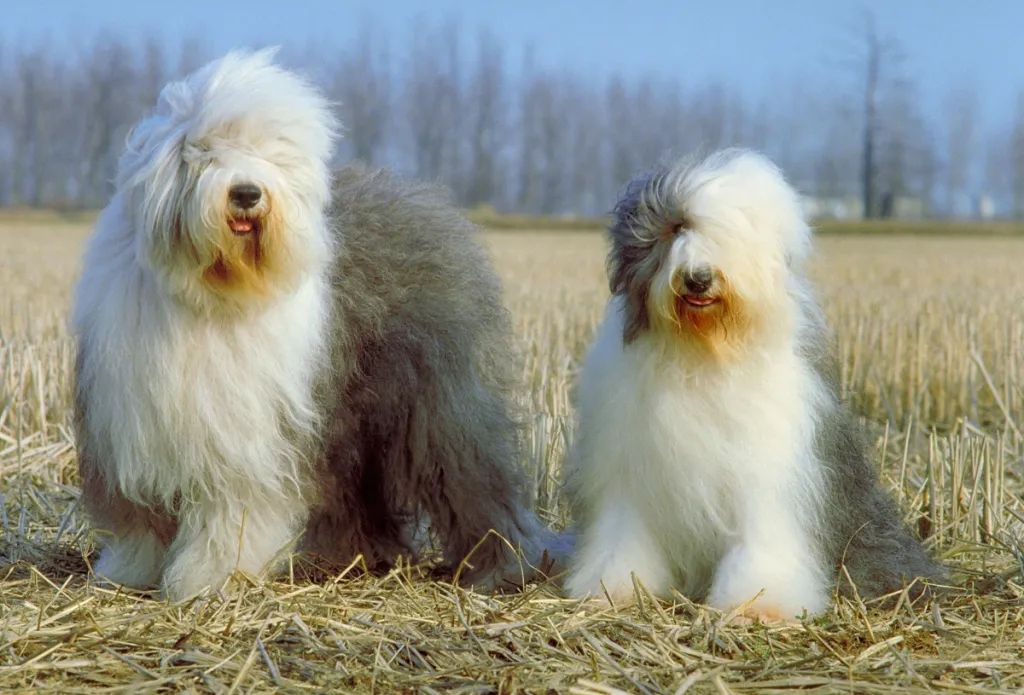
Characteristics of Old English Sheepdogs
Old English sheepdogs have chill personalities and make a great family pet as they are known for being affectionate, gentle, and cuddly. They shed a moderate amount, but require a substantial amount of grooming due to their long hair. They are playful and do well around children, although they may try to herd groups of small kids. They also tend to get along well with other pets, including both dogs and cats.
These good-natured dogs enjoy the comforts of home but also do well in dog shows and competitions that test their agility, herding, and obedience skills. People love these dogs because of their messy hairstyles and bubbly personalities.
As you get to know an Old English sheepdog’s personality, here’s what you can expect based on his or her breed characteristics:
| Breed Characteristic | Level (High, Medium, Low) |
| Affectionate with People | High |
| Good with Kids | High |
| Good with Pets | High |
| Need for Exercise | Medium |
| Energy Level | Medium |
| Intelligence Level | Medium |
| Able to Be Trained | Medium |
| Amount of Barking | Low |
| Amount of Shedding | Medium |
History of Old English Sheepdogs
Old English sheepdogs come from the British Isles and are believed to have been developed in the western part of England. Here in Devon, Somerset, and Cornwall, breeders desired to create a large dog capable of herding. The dogs bred to create this breed possibly include dogs of Scottish, Russian and other European origin, indicating that they are not fully English by blood.
In early times, people used these dogs to move cattle down dirt roads and from the pasture to markets in town. On some farms, their coats were sheared annually to make yarn for clothing. Many people have shown and exhibited Old English sheepdogs over the generations and featured them in movies and TV shows. The American Kennel Club recognized the Old English sheepdog as a breed in 1888.
Old English Sheepdog Standard Information
Old English sheepdogs have a very distinctive look and great balance. They have a profuse but not excessive coat, agile movement, and the capability to perform demanding tasks around livestock.
Here is an overview of the breed standard information for Old English sheepdogs by which the dogs are judged at shows:
Head:
- Intelligent expression
- Blue or brown eyes, or one of each
- Medium-sized ears held flat to the head’s sides
- The whole head should be covered with hair
- Black and large nose
- Level or tight scissors bite
Neck, Topline, Body:
- Fairly long and gracefully arched neck
- Short and compact body, broader at rump than shoulders
- Stout and gently arched in
- Tail docked close to the body when not naturally bob-tailed
Forequarters:
- Shoulders well laid back and narrow at points
- Dead-straight forelegs with plenty of bone
Hindquarters:
- Round and muscular hindquarters with well-let-down hocks
- Small and round feet with thick and hard pads
Coat:
- Profuse but not excessive
- Shaggy and free from curl
- Undercoat is waterproof when not removed by the season or grooming
Color:
- All shades of gray, grizzle, blue, and blue merle
- Can be with or without white markings or in reverse
Gait:
- Free, powerful, and effortless trotting movement
- Very elastic at a galloping pace
- Amble or pace at slower speeds
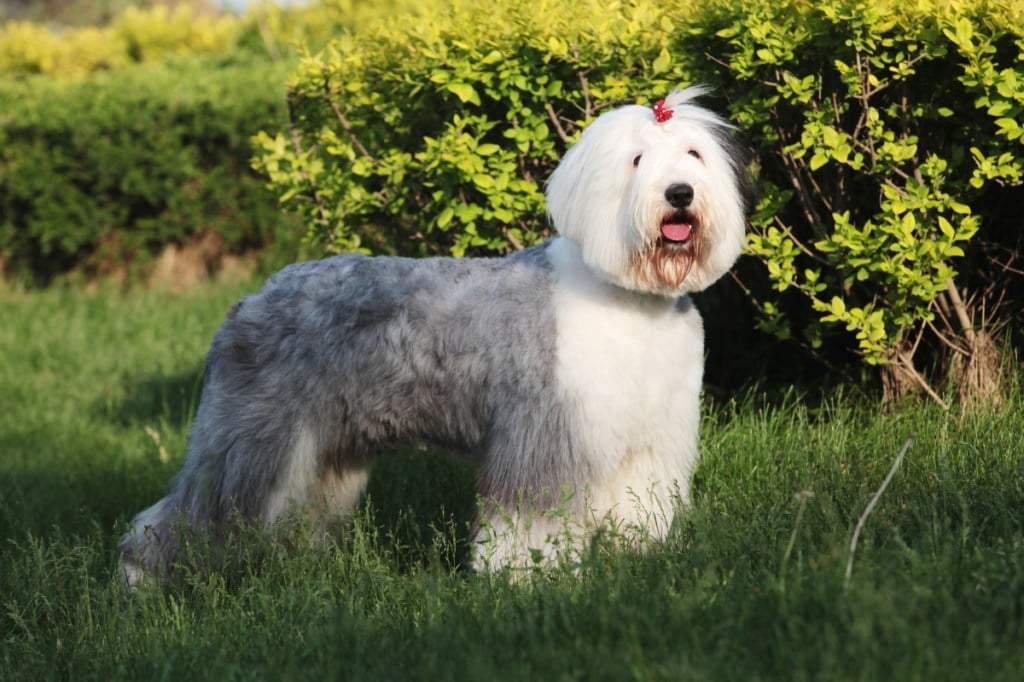
Caring for Old English Sheepdogs
Old English sheepdogs do best in places where they have plenty of room to move around and in cool climates. These dogs can be protective of their family members when necessary and enjoy a good balance of active time and lazy time. As herding dogs, you may find your Old English sheepdog actually supervising and herding young children – a bonus for parents!
Here are some general tips for taking the best care of an Old English sheepdog:
Best Living Environments:
- Cool climates
- No small apartments
- Grassy areas to play in rather than only hard surfaces
Type of Exercise:
- At least 60 minutes of exercise daily, such as walking or vigorous playtime
- Outdoor play sessions
- Playing fetch
- Reduce outdoor exercise during hot weather
Mental Enrichment:
- Give the dog a job to do
- Games of fetch and chase
- Try agility courses
Training Strategies:
- Quick to learn obedience command
- These are independent-thinker dogs but responsive and respond well to positive feedback
- Crate training can be challenging, as these dogs often do not like confinement
Grooming Tips:
- Challenging to maintain the coat
- Expect to spend three to four hours weekly grooming
- Get tips from an expert groomer about brushing and combing
- Daily brushing is required
- Expect moderate-to-heavy shedding
- Stock up on a coarse steel comb, pin brush, and slicker brush
Common Health Problems of Old English Sheepdogs
The average life expectancy of an Old English sheepdog is 10 to 12 years. This range is typical of many large dog breeds. A reputable breeder will ensure that puppies are screened for genetic conditions, but improper grooming, age-related joint issues, and accidents due to overactivity can also cause Old English sheepdogs to become ill.
These are some of the most common health issues that arise with Old English sheepdogs:
- Canine hip dysplasia
- Cataracts
- Hypothyroidism
- Progressive retinal atrophy
- Degenerative myelopathy (neurologic condition)
- Deafness
- Bloat
- Multidrug resistance mutation 1 (may increase side effects with some medications)
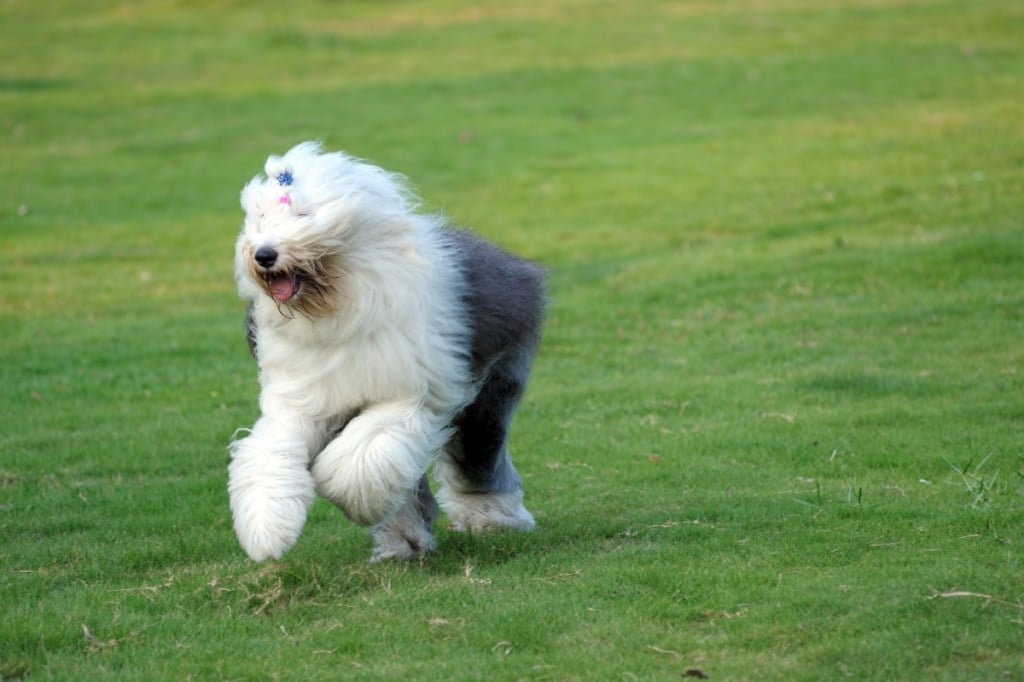
Diet and Nutrition for Old English Sheepdogs
Fully grown Old English sheepdogs need between 2.5 and 4.5 cups of dry dog food daily. The reason for this large range is that some Old English sheepdogs are much more active than others, while age also plays a role in dietary portions. Since these dogs are prone to bloat, make sure to give your dog plenty of time to digest a meal before going outside to play. Some recommended foods for Old English sheepdogs include Purina Pro Plan All Life Stages Performance 30/20 Dog Food, Royal Canin Large Breed Adult Dog Food, and Hill’s Science Diet Adult Large Breed Dog Food.
Where to Adopt or Purchase Old English Sheepdogs
The Old English Sheepdog Club of America is an AKC-member club and a recognized national breed club. It offers a list of breeders who are in good standing and adhere to the organization’s code of ethics for breeding this type of dog. You can also search the American Kennel Club Marketplace to find your new puppy. A purebred puppy can cost anywhere from $1,200 to $2,500 depending on the location and breeder.
There are also various rescue organizations that are specific to the Old English sheepdog and can help you find an adoptable pet in need of a home. These organizations include the Old English Sheepdog Club of America, Red River Old English Sheepdog Rescue, Texas Old English Sheepdog Rescue, and Midwest Old English Sheepdog Rescue.
Related Breeds
Does a big, fluffy, active dog sound exactly like what your life has been missing? If so, you might want to learn more not only about the Old English sheepdog but other similar and related breeds, such as these:
- Bearded collie
- Samoyed
- Polish lowland sheepdog
- Briard
- Berger Picard
Pet Insurance for Old English Sheepdogs
At Healthy Paws, we are pleased to offer Old English sheepdog insurance so that you can always take the best care of your pet without having to worry about finances. For Old English sheepdogs, we offer coverage for accidents, new illnesses, breed-specific and hereditary conditions, emergency care, cancer, and alternative care. We have a speedy claims payout process that involves simply taking a photo of your vet bill and sending it to us via mobile app. You can take your Old English sheepdog to any licensed vet you trust and let us take care of the rest when something goes wrong with your pup.
Get peace of mind from the top-rated pet health insurance company in the country! Get your online quote today and enjoy more cuddles and adventures with your Old English sheepdog.
